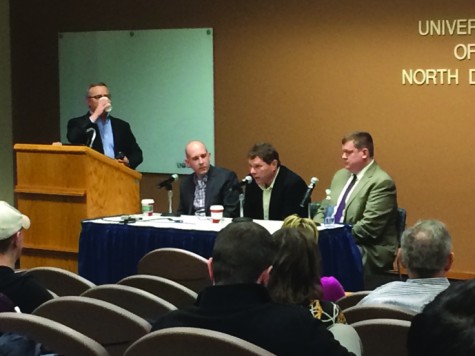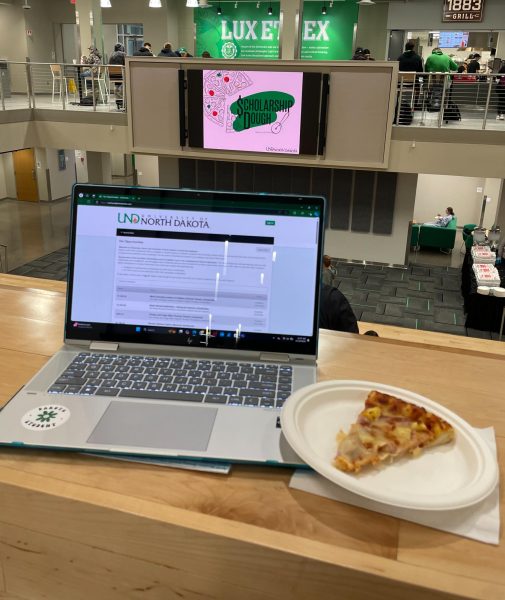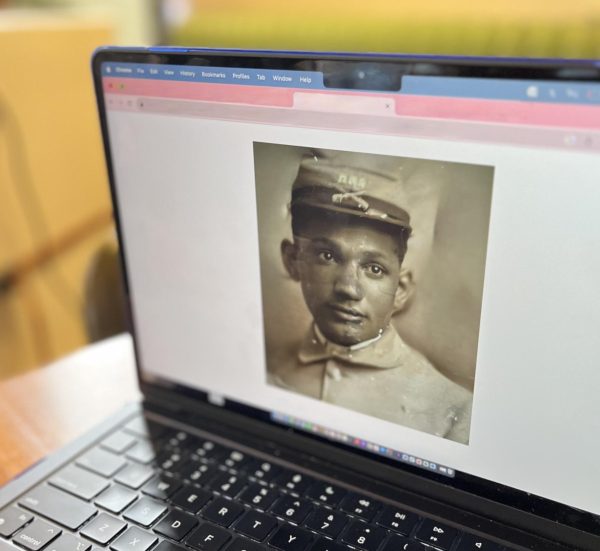NotiFind alerts campus of emergencies
Police sit in front of Frandsen Bank last week during an emergency incident that students were notified of via NotiFind. Photo by Chester Beltowski/The Dakota Student.
Last Friday, NotiFind sent out multiple phone messages alerting UND students and employees of an incident on campus. Many are familiar with NotiFind, but there’s a lot more to it than automated voices and scripted messages. There are multiple people working behind the curtain.
“If the chief or the incident commander feels that it’s a serious or continuing threat to the safety of our community, then they send it out,” said Mike Lefever, Associate Director for Emergency Management, about NotiFind messages.
Friday was one of these scenarios.
“It was getting into a complex situation,” Lefever said.
Multiple police cars and a partial SWAT team were sent out to 2755 10th Ave. N where a woman with a knife was threatening physical harm to herself. Eric Plummer, UND’s Associate Vice President for Public Safety and Chief of Police, was the one to make the call that day.
“We knew we were going to be there for an extended period of time,” Plummer said.
When he realized the incident would be ongoing, he said he wanted to make sure the campus community knew about it and that it was under control before he even alerted the media.
The close proximity of the incident also played a role.
“When that’s right there next to the university, it makes people nervous,” Lefever said.
Located within the campus police station is Lefever’s office, where the walls are lined with bookshelves filled with binders containing emergency protocols.
The emergency protocols list a variety of ways a message can be sent out if there is a threat to public safety, such as a weather incident or an emergency like last Friday. These methods of communication can include email, Blackboard notifications and the outdoor sirens. When a message needs to be heard fast, NotiFind sends them out to phones.
A message sent through text and to cell phones takes around three to four minutes and covers about 20,000 devices, Lefever said. If home and office phones are included, the number of devices is closer to 60,000 and would take about 16-20 minutes for the message to go through to everyone.
NotiFind is only used about 15-20 times a year, Lefever said, and most of these messages are for tests and weather-related issues.
“Based on an assessment of an event, there might not be a need for NotiFind,” Plummer said.
But when there is, there is a center dedicated to making sure these messages get sent out.
“We are the primary people charged with sending out the NotiFind messages,” said Operations Center Supervisor Pamela Zimbelman.
Inside the Facilities Management building is the Operations Center, a 24-hour station where part of the staff’s job includes writing and sending out NotiFind messages to students and employees following approval by authorized officials.
“This is probably the third time we’ve sent this type of message out,” Zimbelman said about the situation last Friday.
As part of Emergency Management, a lot of information passes through the Operations Center, which could be viewed as an intermediary directing a flow of information to the right people and departments.
“Maybe a little too much information is not enough,” Lefever said.
Jamie Hutchinson is a staff writer for The Dakota Student. He can be reached at [email protected].











